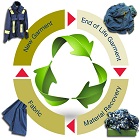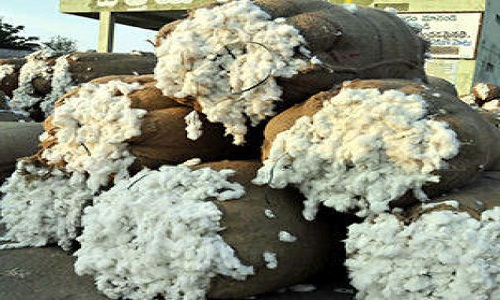FW
A provider of high quality dyes and chemicals, Huntsman Textile Effects has entered a partnership and collaboration agreement with Viyellatex Group, a leading multi-dimensional business conglomerates in Bangladesh that has spinning, knitting, dyeing, accessories and printing facilities. Under the agreement, Huntsman will support Viyellatex’s mills to streamline operations and optimise processes, train technical staff, and make recommendations to help improve yield and productivity. The agreement reinforces the recognition of Huntsman as a preferred supplier of Viyellatex Group.
Chuck Hirsch, Vice President, Sales and Technical Resources of Huntsman Textile Effects says, “Viyellatex Group places strong emphasis on sustainability by minimising energy usage, adopting waste and water recycling, and using only organic materials and environmentally compliant chemicals and dyes and Huntsman is the perfect partner in this regard as it shares this vision. The company was deeply honoured to be a trusted partner of Viyellatex Group for the last 16 years and counting. With the shared values of Huntsman in sustainability and innovation, this partnership should be a reflection of the confidence and trust that our customers place in us.”
The ready-made garment (RMG) sector in Bangladesh is worth $28.1 billion in 2015-16, with more than 4,300 garment factories employing about 4 million people and accounting for 82 per cent of the country’s total exports.
"Considered as the most popular fibre in the world, synthetic fibres account for about 65 per cent of world production versus 35 per cent for natural fibres. Most synthetic fibres (approximately 70 per cent) are made from polyester, and the polyester most often used in textiles is polyethylene terephthalate (PET)."

Considered as the most popular fibre in the world, synthetic fibres account for about 65 per cent of world production versus 35 per cent for natural fibres. Most synthetic fibres (approximately 70 per cent) are made from polyester, and the polyester most often used in textiles is polyethylene terephthalate (PET).
Majority of the world’s PET production – about 60 per cent – is used to make fibres for textiles; about 30 per cent is used to make bottles. It’s estimated that it takes about 104 million barrels of oil for PET production each year – that’s 70 million barrels just to produce the virgin polyester used in fabrics. That means most polyester – 70 million barrels worth – is manufactured specifically to be made into fibres, not bottles, as many people think. Of the 30 per cent of PET used to make bottles, only a tiny fraction is recycled into fibres. But the idea of using recycled bottles – ‘diverting waste from landfills’ – and turning it into fibres has caught people’s attention.
The green proposition

There are specifically two reasons that support sustainability quotient of recycled polyester (or rPET): Energy needed to make rPET is less than what was needed to make the virgin polyester in the first place, so we save energy and we are keeping bottles and other plastics out of the landfills. But because rPET is divided into ‘post-consumer’ PET and ‘post-industrial’ rPET: post-consumer is one that comes from bottles; post-industrial might be the unused packaging in a manufacturing plant, or other byproducts of manufacturing. The ‘greenest’ option is the post-consumer PET, and that has driven up demand for used bottles. Indeed, the demand for used bottles, from which recycled polyester fibre is made, is now outstripping supply and cynical suppliers are now buying new, unused bottles directly from bottle producing companies to make polyester textile fibre that can be called recycled.
Recycling phenomenon
There are two types of recycling – mechanical and chemical. Mechanical recycling is done by melting the plastic and re-extruding it to make yarns. However, this can only be done few times before the molecular structure breaks down and makes the yarn suitable only for the landfill where it may never biodegrade, may biodegrade very slowly, or may add harmful materials to the environment as it breaks down (such as antimony). William McDonough calls this ‘downcycling’.
Chemical recycling means breaking the polymer into its molecular parts and reforming the molecule into a yarn of equal strength and beauty as the original. The technology to separate out the different chemical building blocks (called depolymerisation) so they can be reassembled (repolymerisation) is costly and almost nonexistent. Most recycling is done mechanically. Chemical recycling creates a new plastic which is of the same quality as the original but the process is expensive.
The base colour of the recycled polyester chips vary from white to creamy yellow, making colour consistency difficult to achieve, particularly for the pale shades. Some dyers find it hard to get a white, so they’re using chlorine-based bleaches to whiten the base. Inconsistency of dye uptake makes it difficult to get good batch-to-batch color consistency and this can lead to high levels of re-dyeing, another very high energy process. Re-dyeing contributes to high levels of water, energy and chemical use. Unsubstantiated reports claim that some recycled yarns take almost 30 per cent more dye to achieve the same depth of shade as equivalent virgin polyesters.
Many rPET fibres are used in forgiving constructions such as polar fleece, where the construction of the fabric hides slight yarn variations. For fabrics such as satins, there are concerns over streaks and stripes. Once the fibres are woven into fabrics, most fabrics are rendered non-recyclable because the fabrics almost always have a chemical backing, lamination or other finish, or they are blends of different synthetics (polyester and nylon, for example).
Although bottles, tins and newspapers are routinely recycled, furniture and carpets usually end up in landfill or incinerators, even if they have been designed to be recycled because project managers don’t take the time to separate out the various components of a demolition job, nor is collection of these components an easy thing to access.
Punjab’s hosiery industry has become the latest victim of demonetization. The cash crunch has led to a massive fall in the demand for woolen apparels, compelling manufacturers to resort to heavy discounts in a bid to clear the built-up inventory. Woolen garment makers are offering lucrative discounts starting from 20 to 50 per cent in December even on fresh products in the wake of lower offtake. They are forced to offer heavy discounts in order to meet their fixed expenses including payment of workers’ wages. Their stocks have built up because of low demand, caused by demonetization. Hopes that the hosiery industry would generate good sales this season have been dashed.
Normally discounts are offered in January or February. Retail sales of woolen items including pullovers and sweaters have been hit hard. With the industry facing a cash crunch, production of summer garments has also suffered. For the last two years the hosiery and blanket industry in Ludhiana faced dull sales owing to warm winters.
Now the industry is reeling under the aftershock of demonetization. After the note ban, there has been no fresh demand from retailers and wholesalers, who in turn say there are fewer customers. So units in Ludhiana feel there is no point in producing when there is no demand. They expect to suffer losses to the tune of crores.
After taking cognizance of the problems the dyeing industry in Tirupur was facing and on recommendation of the Ministry of Textiles, the Finance Ministry has sanctioned Rs 200 crores to Tamil Nadu for the 18 CETPs (Common Effluent Treatment Plants) as an interest free loan to be converted into grant based on the performance of the concerned CETPs. The particular industry was on the verge of closure due to severe financial crisis.
The industry was facing problems due to their huge investments in the first ever Zero Liquid Discharge (ZLD) projects in the country. The move will help ailing CETPs and 450 dyeing units to recover from the financial crisis and help them to complete the project to achieve 100 per cent capacity utilisation, it added.
More than 450 dyeing units in Tirupur had collectively set up 18 ZLD enabled CETPs with a total cost of Rs 1,013 crore. The project has become a global standard and appreciated by the environmentalist and processing industry world over. However, being the first project of its kind it had several technical challenges and cost overrun which put them into financial crisis due to outstanding Bank loans and incomplete projects, the statement said. Tirupur is a hub of textile processing and knitting industry providing employment to over 5 lakh persons and contributes 22 per cent of the total garment export of the country.
Nearly all UK stores of US-based clothing brand American Apparel have shut down. American Apparel filed for Chapter 11 bankruptcy in the US in October 2015. The teen retailer, founded in 1989, made its clothes in Los Angeles and was known for its sexually charged advertising. The hoped-for turnaround of the clothing manufacturer and retail chain—which has long grappled with shrinking sales and an outsize store footprint—did not happen. Plans to improve online selling didn't pay off, and, at a time when shoppers are going online in greater and greater numbers, American Apparel watched its online sales fall.
American Apparel has 110 stores in the US and 83 others around the world including UK, Ireland, Germany, Spain, Canada, Japan and Australia. Canadian manufacturer Gildan Activewear has agreed to buy the brand’s worldwide intellectual property rights. The Canadian clothing company is more interested in buying some of American Apparel’s manufacturing plants in the US. But most production will probably move to Gildan’s manufacturing hubs in Central America and the Caribbean where it’s much lower cost than anywhere in the US.
At least eight US teen retailers have filed for bankruptcy in the past two years as the spending habits of young people shift and they visit malls less often.
Textiles are often regarded as one of Vietnam’s key export sectors with an average annual growth rate of 15 per cent during 2010-2015. However, it is also faced with a slew of challenges of which the most recent challenge stems down to labour in the country no longer being as cheap as it once was.
On the other hand, it is also difficult to raise the textile industry to a higher level due to competitive factors in labour skills, modern technologies and equipment and diversified products. Due to limited resources, most domestic companies choose to gradually invest each year. This situation is in contrast compared to FDI as they represent less than 25 per cent of the nearly 7,000 textile enterprises nationwide but account for 70 per cent of the total export capacity. This shows that the overwhelming advantages of foreign companies over domestic enterprises will only continue to grow if reasonable policies and development direction are not soon formed.
According to the Vietnam Textile and Apparel Association, 2016 was an extremely difficult year for the country's textile industry, with the lowest growth rate since 2008 (the year that Vietnam's garment recorded no export turnover growth due to the global economic crisis) so far. By 2018, Vietnam's garment industry has been forecast to face many challenges, especially in regards to small and medium-sized enterprises facing the risk of closing down due to poor competitiveness and extremely difficult production conditions.
In order to ensure rapid decision-making in key strategic area and synergies of integration, on the occasion of INDIA ITME 2016, the Santex Rimar Group launched Santex Rimar India denoting a direct presence of the Group sales and service in the country to increase accountability and ensure continuous support, improved quality and more efficiency for customers. The company’s products portfolio includes Santex, Sperotto Rimar, Cavitec, Isotex, Solwa and Smit.
Giving details, Santex Rimar Group CEO Stefano Gallucci said that the Indian textile, apparel and technical textile markets are projected to grow at a CAGR respectively of 9 and 8 per cent from 2013 to 2023. In this scenario customers need to have a direct relationship with the company. And that is what the company wants and fulfill all their needs faster and better. The company is recruiting experienced talent that can be new proud Group members looking forward to enhancing customer relations.
The company has already installed more than 4,000 machines all over India and wants to keep growing together with its customers. The Group is a technology partner for knitted, woven fabrics, technical textiles, nonwovens and green solutions. Cavitec and Isotex lead the technical textiles machinery market while Santex and Sperotto Rimar produce machines for textile finishing. On the other hand, Solwa provides eco-friendly machinery for water treatment and food dehydration, agribusiness sector and industrial waste management.
Productivity, quality, reliability and energy saving are key values for Santex Rimar Group: the new sales and service organization in Indiais directly taking care not only of customers’ needs but also of their future developments. Since Research and Development is at the heart of our growth, the Group is also in close contact with different institutes where researchers and students are trained: technical textile technology is taught on Cavitec’s plant in Surat while weaving technology is practiced in Ichalkaranji on SMIT looms. Santex Rimar India facilities are based in Coimbatore and Mumbai.
The Vietnam textile industry which saw export value grow 15 per cent per year in five years from 2010 to 2015 is expected to reach $29 billion this year in terms of export value. While the target in export value was much lower than the figures in reality, the development plan was not suitable with the real development of the industry. Though the textile and garment industry was slated to reach $20 billion in export value in 2015 but the industry has reached an export value of $27.5 billion.
The Vietnam Textile and Apparel Association asked the government and sectors to review its development plan for the garment industry by 2020 in order to support local textile and garment enterprises to take opportunities as well as overcome challenges from free trade agreements.
The Association has said there should be renovation of the development plan for the textile and garment industry by 2020 and towards 2030. This is necessary because the industry expects to enjoy many advantages in development over the next 10 years. The adjustment of the plan should be effective until 2025, and towards 2040.
The association has also suggested building development plans for the industry including industrial zones. Many small textile and garment firms have not been put up in specialized zones for the textile and garment sector that led to difficulties in the management and treatment of waste water. This is related to the industry’s sustainable development and protection of the environment.
"To ensure supplies to the Indian textiles industry, the Cotton Corporation of India (CCI) has resorted to commercial purchase of cotton at market rates from around the country. CCI has issued notices reaching out to buyers informing them that they will shortly commence e-auction of FP bales for the cotton season 2016-17. Buyers who are not yet registered may register themselves with the for participating in e-auction of FP bales."

To ensure supplies to the Indian textiles industry, the Cotton Corporation of India (CCI) has resorted to commercial purchase of cotton at market rates from around the country. CCI has issued notices reaching out to buyers informing them that they will shortly commence e-auction of FP bales for the cotton season 2016-17.
Buyers who are not yet registered may register themselves with the for participating in e-auction of FP bales. M M Chockalingam, CMD (in-charge) said that after a gap of almost four years, the Corporation has made a small beginning and purchased about 1,000 bales of 170 kg each so far at commercial rates from various centres even as cotton trades firm on lower arrivals due to the impact of the currency crunch.

The CCI expects to purchase around 15 lakh bales for the season of 2016-17. The prices of the commodity are ruling between Rs 5 000 and Rs. 5,200 per quintal in various markets while Minimum Support Price (MSP) is at Rs 4,160 per quintal and therefore procurement at MSP seems unlikely, he added.
However, apart from MSP operations, CCI also has to perform commercial operations at times in the interests of the farmers and to keep the market stable. CCI has been purchasing kapas or raw cotton from markets wherever the prices are lower. The commercial purchase of up to 15 lakh bales would be mainly from the West, Central and Southern parts of the country as prices in the Northern markets are being quoted at a higher price. Kapas prices are ruling between R5, 000 to R5, 200 per quintal in various markets. While prices are expected to soften a bit from next month, most experts have ruled out a drastic fall.
Sutlej is one of the largest integrated textile manufacturing companies and is strongly positioned in the production of value added synthetic, natural and blended yarns, spun yarns, processing of fabrics and home textiles. Sutlej has a strong global clientele and exports to more than 60 countries. It exports to: Australia, Argentina, Bangladesh, Bahrain, Belgium, Brazil, Canada, China, Chile, Cuba, Egypt and France. For fiscal 2016 and the half year ended September 30, 2016, total export revenue as a percentage of total revenue was about 26 per cent. The home textile segments contribution of exports to total revenues is more than 35 per cent.
The company will continue to upgrade existing facilities by adding, modernising existing machinery and installing additional latest technology machines across segments. After witnessing sluggish growth during 2008, the home textile segment has shown signs of recovery and registered considerable growth in the last few years. The home textile segment is growing at a CAGR of 3.5 per cent. The US and EU are gradually coming out of the recessionary phase. Apparel and home textile consumption is picking up. Going forward India's share is expected to rise from seven to ten per cent.












